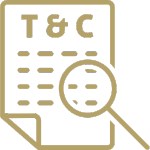31 Crucial Steps For Buying Wholesale Stock For Your Retail Shop


Are you a retail shop owner looking to stock your shelves with a wide variety of products and brands that attract customers and boost your profits?
If so, buying wholesale stock should be at the top of your strategy list. Wholesale purchasing allows you to acquire products in bulk, directly from manufacturers or distributors, at a lower cost per unit compared to retail prices.
This not only helps you save money but also opens up opportunities for higher profit margins. In this comprehensive guide, we will walk you through the essential steps and considerations to help you make informed decisions when procuring wholesale stock for your retail shop.
Whether you're a seasoned retailer or a newcomer to the industry, this guide is designed to provide valuable insights into the world of wholesale buying.
In This Article, We'll Take A Look At

1. Understanding Wholesale Buying

Before diving into the specifics of buying wholesale stock for your retail shop, it's crucial to grasp the fundamentals of wholesale buying.
Wholesale buying is the practice of purchasing products in large quantities directly from manufacturers or distributors at a lower cost per unit than what consumers pay at retail stores.
This cost advantage allows retailers to benefit from economies of scale and, ideally, achieve higher profit margins when selling these products to consumers.


a. Reputation and Reliability
First and foremost, research the reputation and reliability of potential suppliers. Look for suppliers with a track record of delivering quality products on time. Online reviews, references, and recommendations from fellow retailers can be valuable resources.

b. Pricing and Terms
Compare the pricing and payment terms offered by different suppliers. Take into account minimum order quantities, payment terms (e.g., net 30, net 60), and any discounts available for bulk orders. Ensure that the pricing aligns with your budget and business goals.

c. Product Range
Evaluate the variety of products a supplier offers. Ideally, your supplier should carry a range of products that align with your store's niche or target market. A diverse product range allows you to offer a broader selection to your customers.

d. Location
Consider the geographical location of your supplier. Opting for a supplier in close proximity can help reduce shipping costs and lead times. However, don't dismiss the possibility of working with distant suppliers if they offer unique or cost-effective products.

e. Quality Assurance
Verify that the supplier maintains stringent quality control standards. Request product samples to assess their quality before making significant purchases. Quality issues can harm your store's reputation and customer satisfaction.


a. Customer Demographics
Determine the demographics of your target customers, including age, gender, income level, and lifestyle. This information will help you tailor your product offerings to meet their specific needs and preferences.
b. Market Trends
Stay current with industry trends and consumer preferences. Attend trade shows, read industry publications, and follow relevant blogs and social media accounts to gain insights into the latest product trends.


c. Competitor Analysis
Analyse your competitors' product offerings and pricing strategies. Identify gaps in the market that you can fill with unique or specialised products to stand out and attract customers.


a. Initial Capital
Determine the amount of capital you have available for purchasing wholesale stock. If you're launching a new retail venture, you may need to secure financing through loans or investors.
b. Cost Breakdown
Create a detailed cost breakdown for each product you intend to purchase. Include the cost per unit, shipping fees, and any additional expenses. This breakdown will help you calculate your profit margins accurately.


c. Cash Flow Management
Understand the cash flow dynamics of your business. Be prepared for seasonal fluctuations in sales, and ensure you have sufficient working capital to cover expenses during slow periods.


a. Niche Focus
Consider specialising in a specific niche or category of products. This specialisation can help your store stand out from competitors and attract a dedicated customer base.

b. Trends and Seasonality
Pay attention to seasonal trends and holidays. Stocking seasonal products can boost sales during specific times of the year and cater to customers' holiday shopping needs.

c. Product Mix
Create a balanced product mix that includes both staple items that sell consistently and trending or novelty products that generate excitement and interest.

d. Unique Selling Proposition (USP)
Identify what sets your products apart from the competition. Whether it's quality, design, or price, having a unique selling proposition will give you a competitive edge in the market.

a. Build a Strong Relationship
Cultivate a positive and respectful relationship with your supplier. Frequent communication and collaboration can lead to better deals and personalised service.
b. Bulk Ordering
Negotiate for discounts based on the volume of your orders. Suppliers often offer better pricing for larger quantities, so take advantage of bulk ordering when possible.
c. Payment Terms
Discuss payment terms that work for both parties. Negotiate for extended payment periods if possible, as this can help with cash flow management.
d. Exclusive Agreements
Consider entering into exclusive agreements with suppliers for specific products or product lines. This can give your store a competitive edge by offering unique products that competitors don't have access to.


a. Order in Advance
Place your wholesale orders well in advance to ensure you have sufficient stock to meet customer demand, especially during peak seasons or promotional events.
b. Inventory Tracking
Implement an inventory tracking system to monitor stock levels, track sales, and identify slow-moving items that may need to be discounted or phased out.
c. Reorder Points
Set reorder points for your products to automate the ordering process. When stock reaches a certain level, reorder to avoid stockouts and maintain consistent availability.
d. Safety Stock
Maintain a safety stock level to account for unexpected increases in demand or delays in new orders.


a. On-time Deliveries
Monitor whether your supplier consistently delivers orders on time. Delays can disrupt your inventory management and lead to customer dissatisfaction.

b. Product Quality
Continuously evaluate the quality of the products you receive. Address any quality issues promptly with your supplier to maintain customer satisfaction.

c. Communication
Assess the level of communication and responsiveness from your supplier. Effective communication is essential for resolving issues and making necessary adjustments.

d. Cost-effectiveness
Regularly review your supplier relationships to ensure that they remain cost-effective. As your business grows, you may be able to negotiate even better terms and pricing.


a. Market Expansion
Explore opportunities to expand into new markets or reach a broader audience. Conduct market research to identify areas with untapped potential.
b. Diversification
Diversify your product offerings to appeal to a wider range of customers. Keep an eye on emerging trends and customer preferences to adapt your inventory accordingly.


c. Online Presence
Establish an online presence through e-commerce platforms and social media. This can significantly expand your customer reach and boost sales.
d. Data Analysis
Leverage data analytics to gain insights into customer behaviour, popular products, and sales trends. Use this information to make informed decisions about your inventory.


FAQs - Buying Wholesale Stock
Wholesale purchasing involves buying goods or merchandise in bulk at a discounted price from manufacturers, distributors, or wholesalers. It's a common practice for retailers to stock their inventory.
Buying wholesale allows you to purchase goods at a lower cost per unit, enabling you to maximise profits when selling to customers. It also provides access to a wide range of products and helps ensure consistent inventory availability.
You can find wholesalers through trade shows, industry events, online directories, and by directly contacting manufacturers. Researching and networking within your industry can also help you discover reliable wholesale suppliers.
Factors to consider include the supplier's reliability, product quality, pricing, minimum order requirements, shipping costs and times, return policies, and customer service. It's essential to choose suppliers that align with your business needs and values.
Minimum order requirements vary among wholesalers and depend on factors such as the type of product, supplier policies, and your business needs. Some wholesalers may have a minimum order quantity (MOQ) or a minimum order value.
With Widdop & Co you can benefit from no minimum order quantities and minimum order values. This allows you to stock your shop as often as you'd like, when it suits you.
To acquire a wholesale account visit our enquiry page, fill in your details and our new business team will follow up with you.
Join WIDDOP & Co. If you are looking to add profitable and desirable wholesale products to your range. Widdop & Co have 140 years history of award-winning service.



